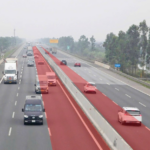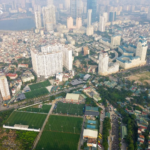December 19, 2025 Marks the Commencement of Cu Mong Tunnel Expansion
The Ministry of Construction has submitted a report to the Government regarding the investment and construction status of the tunnel system on the North-South Eastern Expressway, aiming to complete nine road tunnels in the upcoming phase.
According to the Ministry of Construction, during the 2017-2020 period, the remaining three tunnels—Cu Mong, Nui Vung, and Than Vu—will be implemented, with contractors selected to begin construction on December 19, 2025. Notably, the Cu Mong Tunnel, spanning 2,572 meters, is proposed for completion to align with the Quy Nhon – Chi Thanh Expressway planning.
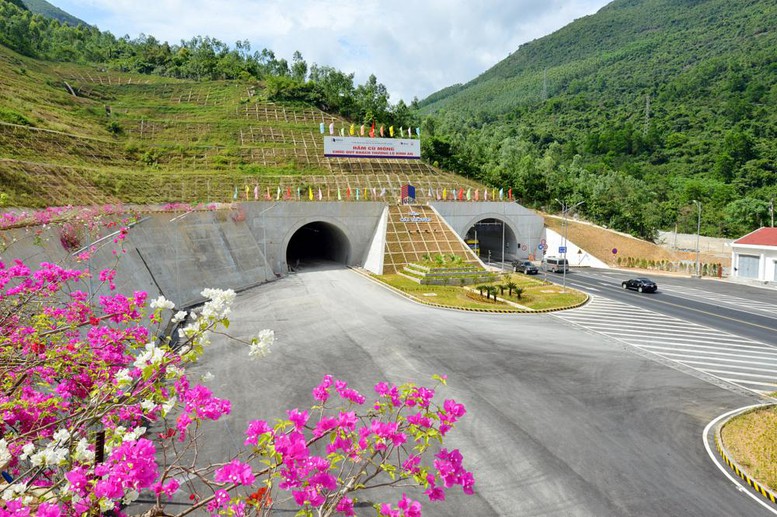
The Cu Mong Tunnel project starts at the junction with Package 11-XL of the Quy Nhon-Chi Thanh section at Km19+800 and ends at the junction with Package 12-XL at Km24+900 – Photo: Deo Ca
Project Management Unit 85 assesses that the expressway section through the Cu Mong Tunnel is one of the bottlenecks of the entire route, impacting operational capacity, efficiency, and the effectiveness of the Eastern Expressway.
According to survey data from the consultant for the Quy Nhon – Chi Thanh section, the projected traffic volume on National Highway 1 (including the expressway) by 2025 is approximately 25,000-27,000 vehicles per day and night. This volume could lead to overcapacity issues for the current two-lane tunnel configuration in the Cu Mong area.
The Ministry of Construction emphasizes that expanding the tunnel is essential to enhance traffic capacity, improve road safety, and optimize project investment efficiency during operation.
The Cu Mong Tunnel project begins at the junction with Package 11-XL of the Quy Nhon-Chi Thanh section at Km19+800 and ends at the junction with Package 12-XL at Km24+900.
Project Management Unit 85 proposes a design solution to expand the Cu Mong Tunnel by constructing an additional tunnel tube to the left of the existing two tubes, with the following technical specifications:
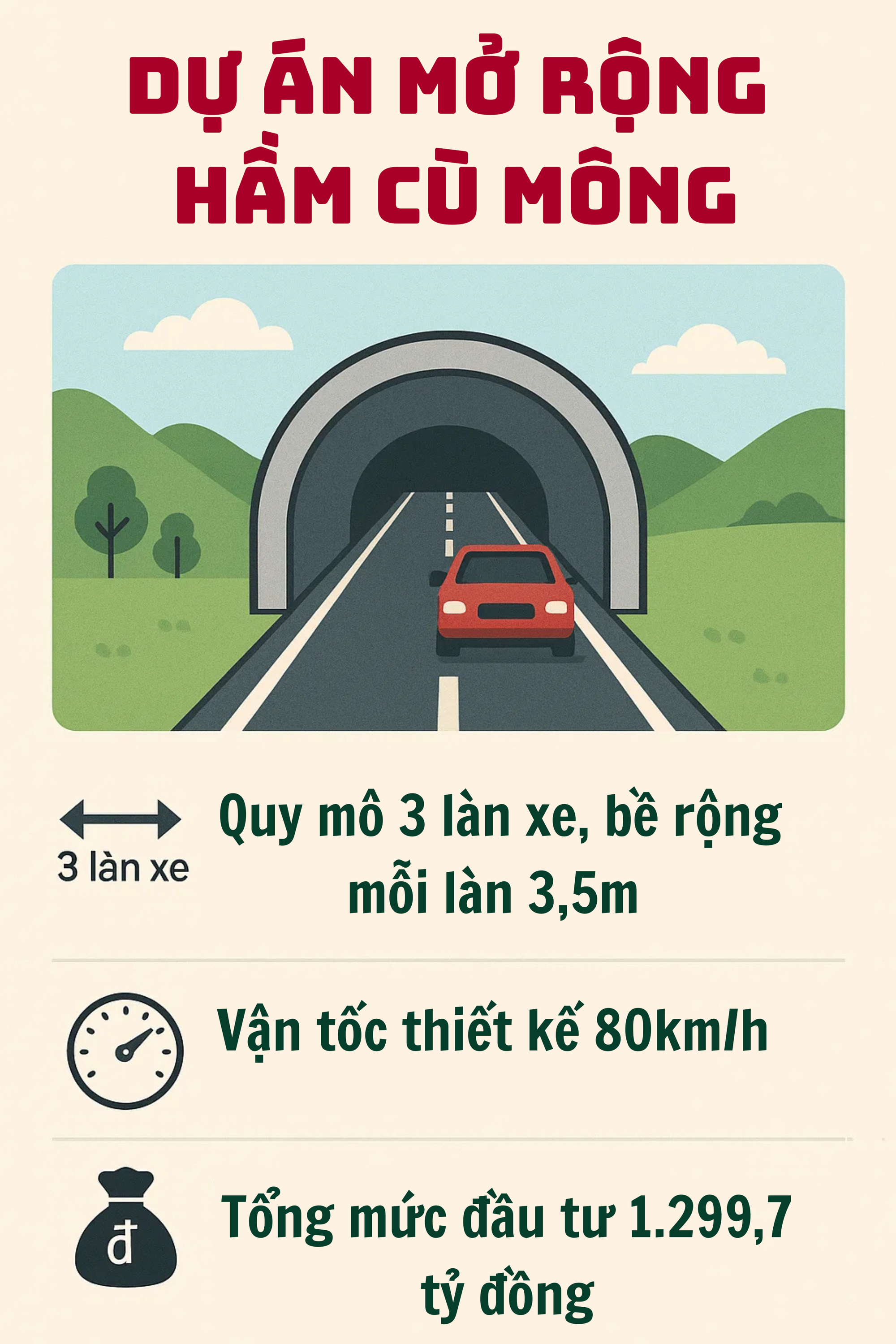
With the existing two tunnel tubes, each tube will accommodate two lanes of traffic. This approach offers advantages such as lower construction costs and minimal land expansion requirements.
Project Management Unit 85 has reviewed and preliminarily estimated the total investment cost for expanding the Cu Mong Tunnel and its approach roads at 1,299.7 billion VND, utilizing public investment funds.
Cu Mong Tunnel: Vietnam’s Third-Longest Tunnel, 100% Built by Vietnamese Engineers
The Cu Mong Pass road project, with a total length of over 6.6 km, including a nearly 3 km tunnel, was officially inaugurated and opened to traffic in late January 2019, after more than three years of construction. The project has a total investment of 3,921 billion VND, a design speed of 80 km/h, and is considered the most complex project to date in the South Central region.
The project was executed by domestic enterprises and contractors, applying advanced global technology and techniques. The Cu Mong Pass construction site is inherently complex, with challenging geological features.
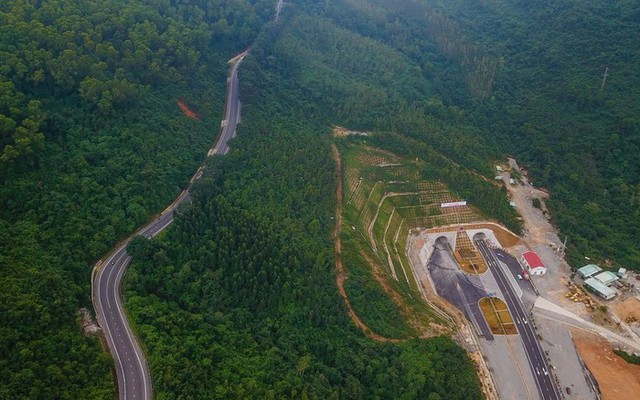
Cu Mong Tunnel entrance from above. Photo: Nhip song Thi truong
To ensure safety and avoid major geological fault zones, experts and engineers adopted a curved construction approach to minimize land and rock subsidence. Additionally, rescue and firefighting teams were on standby 24/7 to ensure project safety.
The most challenging phase was connecting the two tunnel ends, which took 18 months. During this period, the investor utilized approximately 30% of the excavated soil and rock to construct the tunnel lining and road foundation. Leveraging experience from the Deo Ca Tunnel project, construction speed doubled, achieving 12 meters of tunnel lining per day.
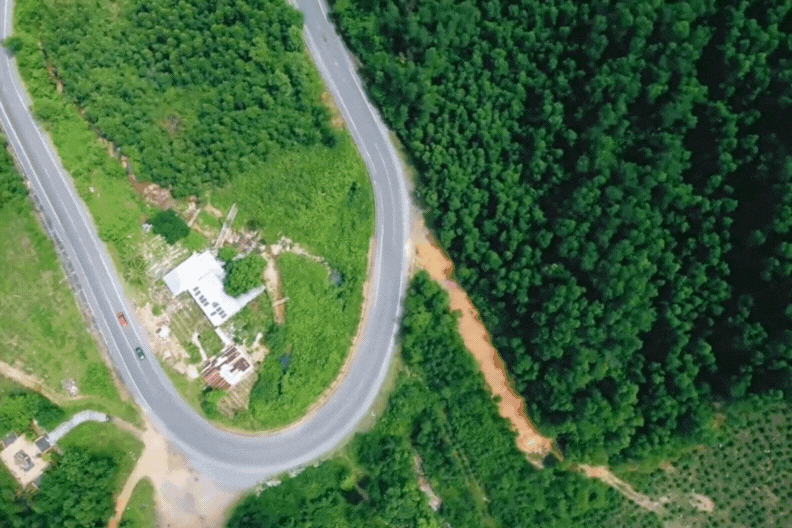
Cu Mong Pass from above. Clip: Tungtang TV
The ingenuity and agility of Vietnamese engineers and workers significantly contributed to the project’s success, with innovative techniques enhancing productivity and efficiency.
Following its inauguration, the Cu Mong Road Tunnel became Vietnam’s third-longest tunnel, surpassed only by the Hai Van Tunnel (over 6.28 km, inaugurated in June 2005) and the Deo Ca Tunnel (over 4 km, opened in July 2017). This project not only reduces the dangers associated with traversing the pass but also cuts travel time from 30 minutes to just 6 minutes.
Restrictions Imposed on Multiple Vehicle Types in Lane 1 of Hanoi-Haiphong and Phap Van-Cau Gie Expressways
In a recent update by the Vietnam Road Administration, a new regulation has been implemented to enhance safety and reduce congestion on the Hanoi – Hai Phong and Phap Van – Cau Gie expressways. Effective immediately, heavy vehicles such as trucks, tractor-trailers, passenger buses with over 29 seats, and sleeper buses are prohibited from using the leftmost lane (Lane 1) on these highways. This strategic adjustment aims to streamline traffic flow and minimize potential hazards, ensuring a smoother and safer driving experience for all road users.
What Makes the $218 Million Cable-Stayed Bridge in Southern Vietnam Special? Built Entirely by Vietnamese, Praised by the Prime Minister for Its Superior Design, Yet Costing Half as Much as Its Predecessor
The Mỹ Thuận 2 Bridge boasts five key advantages over its predecessor, as meticulously analyzed by the Prime Minister himself.
The Evolution of Urban Transit: FECON’s Vision for a Metro Revolution
Within the context of the National Exhibition “80 Years of Independence, Freedom and Happiness” (August 28 – September 5, at the National Exhibition Center, Dong Anh, Hanoi), the booth of FECON Joint Stock Company has quickly become the “hot spot”, attracting a large number of visitors, especially young people.
The Mighty Connector: A $300 Million Bridge, Months Ahead of Schedule, Set to Unite Two Provinces
The Rach Mieu 2 Bridge is nearing completion with the final touches being put in place. The construction team is gearing up for the inspection on August 12, followed by the anticipated handover to Dong Thap and Vinh Long provinces on August 19. This marks a significant step towards the official inauguration and operation of the bridge.
The Capital’s Quarter-Trillion-Dong Road Project: A Four-Year Transformation Unveiled
The Vu Quynh route, connecting Le Duc Tho and Pham Hung in Nam Tu Liem, Hanoi, has been under construction since 2020. Despite the passage of time, this project remains unfinished, leaving commuters frustrated and the area in a state of perpetual transition.

























